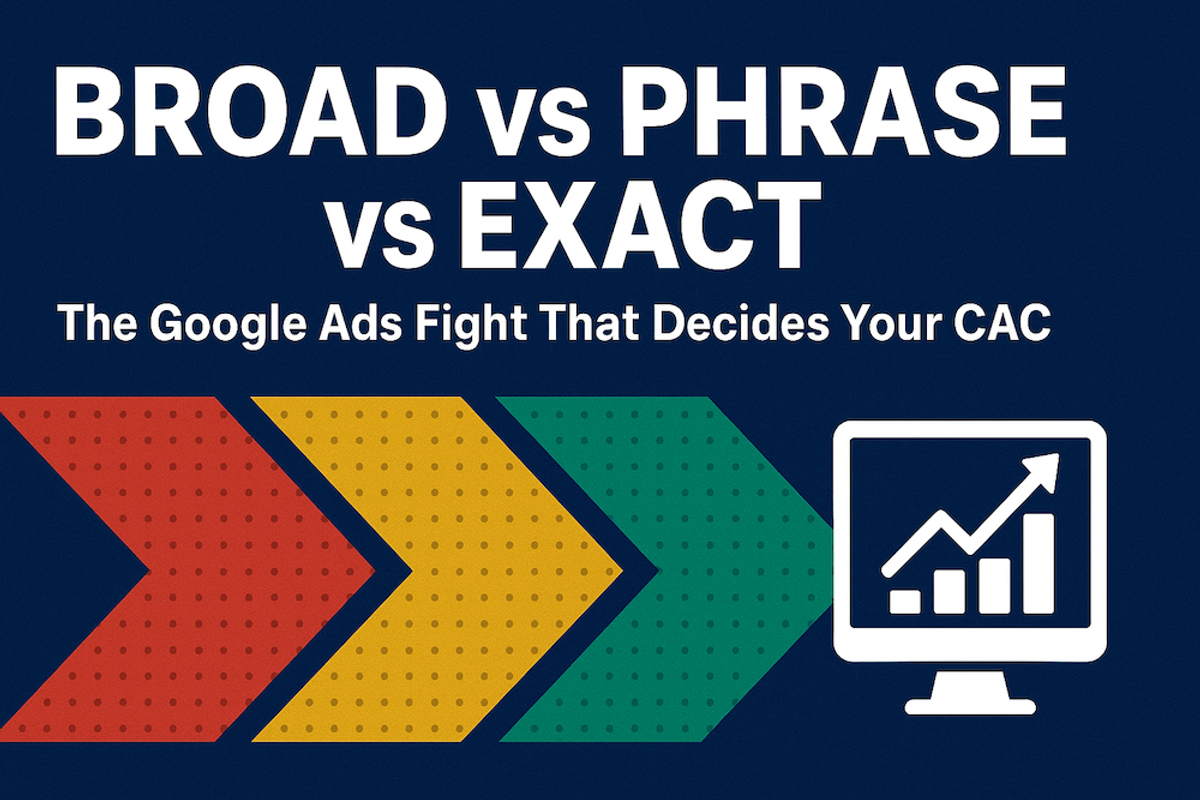
Broad vs Phrase vs Exact: The Google Ads Fight That Decides Your CAC
10/13/2025
If you’re running Google Ads, you’ve probably seen the options for Broad Match, Phrase Match, and Exact Match — but what do they actually mean for your results?
At StacktoSale, we’ve tested all three across different industries, from devtools to SaaS products, and the takeaway is simple: your match type controls who sees your ad — and how efficiently you spend your budget.
Let’s break it down.
🚀 1. Broad Match: Maximum Reach, Minimum Control
Example keyword: ai builder
Your ad could show for:
- “build ai agents”
- “learn ai automation”
- “ai website creator”
How it works:
Google uses signals like user intent, search history, and similar meanings — not just your keywords — to decide when to show your ad.
Pros:
✅ Biggest reach
✅ Finds new, unexpected audiences
✅ Great for testing early campaigns or feeding Performance Max data
Cons:
❌ Can waste budget on irrelevant searches
❌ Harder to control message alignment
❌ Needs tight negative keyword lists and smart conversion tracking
When to use it:
Use Broad Match with automated bidding (like Max Conversions or tCPA) once your pixel data is solid. It’s a discovery engine — not a sniper rifle.
🎯 2. Phrase Match: Balanced Reach + Relevance
Example keyword: "ai builder"
Your ad could show for:
- “best ai builder for startups”
- “ai builder tools”
- But not “ai automation platform”
How it works:
Your ad triggers when a search includes your phrase in the right order, with words before or after it.
Pros:
✅ Strong balance between reach and control
✅ Keeps intent aligned
✅ Easy to manage at scale
Cons:
❌ Can miss related but phrased-differently queries
❌ Still needs regular search term review
When to use it:
Phrase Match is ideal for campaigns that already have some proven keyword intent. Think branded, competitor, or bottom-funnel SaaS terms.
🎯 3. Exact Match: Precision Targeting
Example keyword: [ai builder]
Your ad could show for:
- “ai builder”
- “ai builders”
How it works:
Your ad only appears when the query has the same meaning or close variant of your keyword.
Pros:
✅ Maximum intent alignment
✅ Cleaner performance data
✅ Predictable CPCs and conversion rates
Cons:
❌ Limited reach
❌ Misses new intent variations
❌ Needs larger keyword sets to scale
When to use it:
Use Exact Match for high-intent, proven keywords — when you want control and clear ROI tracking.
🧠 StacktoSale Takeaway
- Broad Match 🔥
• Reach: High
• Control: Low
• Best For: Discovery, feeding PMax
- Phrase Match ⚖️
• Reach: Medium
• Control: Medium
• Best For: Scaled campaigns
- Exact Match 🎯
• Reach: Low
• Control: High
• Best For: Conversion-ready keywords
The best-performing campaigns often mix all three:
- Start Broad to find what converts
- Shift winners into Phrase
- Protect your top performers with Exact
That’s how modern PPC teams train the algorithm while keeping spend efficient.
Ready to scale smarter?
👉 Get a free website audit — and start seeing which match type actually drives revenue, not just clicks.